Add your promotional text...
Samsung Galaxy S20 (2020) Review : "Is the Samsung Galaxy S20 (2020) Still Worth Buying in 2024? Full Review & Analysis"
The Samsung Galaxy S20 (2020) offers a stunning 120Hz AMOLED display, strong performance, and a versatile 64MP camera. While it provides excellent multimedia and 8K video, its high price, smaller battery, and limitations in low-light photography may be drawbacks for some. Overall, it’s a great choice for those seeking premium features at a slightly lower price than the S20 Ultra.
12/13/202424 min read
Samsung Galaxy S20 Review
Is It Still a Flagship Worth Your Money in 2024?
The Samsung Galaxy S20, launched in early 2020, embodies a perfect blend of innovation, performance, and aesthetics, making it a standout in the premium smartphone category. With its bold 6.2-inch Dynamic AMOLED 2X display, offering a 120Hz refresh rate and 1440 x 3200 resolution, the S20 delivers an exceptional visual experience that not only boasts vivid colors but also offers silky-smooth scrolling and responsiveness. The panel's HDR10+ support enhances the overall display quality, making content like high-definition videos and games pop with brilliant detail and contrast. Beneath its sleek, minimalist design lies the powerhouse of the Exynos 990 (or Snapdragon 865, depending on the region), backed by 8GB of RAM, ensuring top-tier performance for any task — from heavy multitasking to demanding gaming experiences — with minimal lag.
The S20's camera setup, while less talked about than its more advanced S20 Ultra counterpart, packs an impressive punch. The 64MP telephoto lens with 3x hybrid optical zoom and up to 30x Space Zoom offers remarkable versatility, allowing for detailed close-ups without sacrificing clarity. Coupled with a 12MP wide-angle sensor and a 12MP ultra-wide sensor, the Galaxy S20 delivers crisp, vibrant images across a variety of shooting conditions, with excellent dynamic range and solid low-light performance. However, the telephoto zoom, though strong in day-to-day use, does struggle with fine detail at the highest zoom levels, especially in challenging light conditions.
Despite its strengths, the Galaxy S20 is not without its shortcomings. The 4000mAh battery, while capable, doesn’t match the long-lasting performance seen in some of its competitors, particularly when paired with power-hungry features like the 120Hz refresh rate. The high refresh rate, though a welcome upgrade for smoother scrolling and gaming, can be a double-edged sword as it leads to faster battery drain, forcing users to choose between smoother performance and longevity. Another notable downside is the absence of a microSD card slot for expandable storage, which is a frustrating omission for users accustomed to the flexibility of adding more storage space. Additionally, the absence of a headphone jack, a feature that Samsung had previously maintained in its Galaxy line, alienates users who prefer wired audio solutions.
In conclusion, while the Galaxy S20 shines in many areas — its vibrant display, high-performance hardware, and strong camera capabilities — it also reveals some trade-offs that may impact the user experience for certain individuals. The decision to prioritize form and function over a few legacy features like expandable storage or longer battery life might turn away some potential buyers, but for those who value cutting-edge technology, speed, and sleek design, the Galaxy S20 offers a premium, future-proof experience.
Introduction


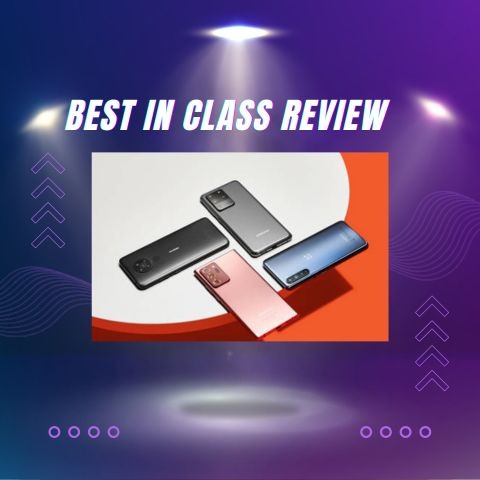

Key Features
A Deep Dive Into Its Features, Performance, and Why It’s Still a Strong Choice in 2024
The Samsung Galaxy S20, released in 2020, comes packed with a range of impressive features that make it stand out as one of the most advanced smartphones of its time. Here’s a breakdown of its key features in a way that highlights both its strengths and areas to consider:
1. Stunning Display – 120Hz Dynamic AMOLED 2X
The S20 features a 6.2-inch Dynamic AMOLED 2X display with a sharp 3200 x 1440 resolution, delivering vibrant colors, deep blacks, and crisp details. One of its standout features is the 120Hz refresh rate, which offers ultra-smooth scrolling and responsiveness, especially for gaming, browsing, and app usage. Whether you're watching videos, playing games, or just scrolling through your feed, the experience feels fluid and immersive. However, it’s important to note that the 120Hz refresh rate is capped at Full HD resolution (1080p), meaning you won’t get the highest resolution and 120Hz at the same time.
2. Powerful Performance
Under the hood, the Galaxy S20 is powered by either the Exynos 990 or Snapdragon 865 (depending on your region), both of which provide excellent processing power. With 8GB of RAM and up to 128GB of internal storage, the S20 handles multitasking, high-end gaming, and heavy app usage without breaking a sweat. The phone is also 5G-ready, ensuring that you’re future-proofed for faster download speeds and more stable connections where 5G networks are available.
3. Impressive Camera System
The camera system on the Galaxy S20 is designed to capture stunning images in a variety of lighting conditions. It boasts a triple-camera setup:
A 12MP wide sensor for sharp and vibrant photos
A 64MP telephoto lens with 3x hybrid optical zoom and up to 30x digital zoom, allowing for clear and detailed close-up shots
A 12MP ultra-wide sensor for capturing expansive landscapes or fitting more into a single frame.
Additionally, the S20 supports 8K video recording, a feature that lets you capture extremely high-definition video, giving you incredible detail and sharpness. The camera also benefits from AI-driven enhancements like Super Steady mode for smoother video, and Night Mode for better low-light shots.
4. Battery Life and Charging
With a 4,000mAh battery, the S20 provides a full day of use under moderate conditions. It’s not the biggest battery around, but it does its job well, especially with the power-saving features that come with Samsung’s One UI. The S20 supports 25W fast charging, allowing you to quickly top up your battery when needed. It also offers wireless charging and reverse wireless charging, so you can charge accessories like your Galaxy Buds or even another phone without needing any cables.
5. Design and Build
The S20 has a sleek and modern design with a near bezel-less screen, and it’s made from premium materials, featuring a glass front and back, with a brushed metal frame. The design feels sturdy and premium in the hand, with the rear camera housed in a distinctive, raised rectangle that adds to its polished look. It’s available in a range of attractive colors, including Cosmic Gray, Cloud Blue, and Cloud Pink. One thing to note, however, is that while the S20 feels solid, it lacks the IP68 rating of the more premium S20 Ultra. That said, it’s still water- and dust-resistant to a certain extent.
6. Software and One UI
Running on Android 10 with Samsung’s One UI, the S20 offers a clean, easy-to-use interface with customizable options. One UI is known for its smooth experience, intuitive navigation, and a focus on one-handed use, with most tools and shortcuts accessible at the bottom of the screen. The phone also receives regular software updates from Samsung, keeping your device secure and up to date with new features.
7. In-display Fingerprint Scanner
The Galaxy S20 uses an ultrasonic in-display fingerprint scanner, which provides an easy and secure way to unlock your phone. It works well for most users, though it can sometimes be slower compared to other fingerprint sensors, particularly when your fingers are wet or oily.
8. 5G Connectivity
One of the standout features of the Galaxy S20 is its 5G connectivity, which allows for faster download speeds and lower latency where 5G networks are available. This makes the S20 future-ready for the growing 5G infrastructure, especially for streaming content, gaming, and using data-intensive apps without the lag associated with older network technologies.
9. Expandable Storage (Not Included)
While the Galaxy S20 offers 128GB of internal storage, it lacks a microSD card slot, meaning you won’t be able to expand your storage if you run out of space. This may be a dealbreaker for users who rely on external storage for large media files, but the 128GB is often enough for most users, especially with cloud services available for backups.
10. Sleek and Comfortable to Hold
At just 163 grams, the Galaxy S20 strikes a balance between being lightweight and feeling substantial. The curved edges and ergonomic design make it comfortable to hold, even during extended use. It’s a well-crafted phone that feels great in the hand.
In conclusion, The Samsung Galaxy S20 is an all-around powerhouse, offering a top-tier display, strong performance, and an impressive camera system. While it may not have the ultra-zoom capabilities or massive battery life of the S20 Ultra, it offers a well-rounded flagship experience for those who want a premium device without the steep price tag. It’s especially well-suited for those who prioritize display quality, camera versatility, and future-proof connectivity. However, if expandable storage or extreme battery longevity are crucial to your daily needs, the S20 may not be the perfect fit.


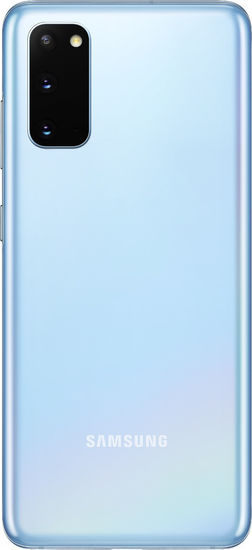

Key Features Table
A Powerhouse with Amazing Features and Performance


Market Positioning
A Deep Dive Into Its Features, Performance, and Why It’s Still a Strong Choice in 2024
The Samsung Galaxy S20 series, launched in early 2020, was positioned as a next-generation flagship lineup within Samsung’s portfolio, aiming to push the boundaries of mobile technology while reinforcing its leadership in the premium segment. The S20 was marketed as a device that not only catered to the evolving needs of consumers but also embraced emerging trends like 5G connectivity, 120Hz refresh rate displays, and AI-enhanced photography. Its position was largely shaped by the increasing demand for high-performance, future-proof smartphones, making it a direct competitor to Apple's iPhone 11 and Google's Pixel 4, with an emphasis on cutting-edge display technology, powerful internals, and versatile camera systems. The S20's dynamic AMOLED 2X display with 120Hz refresh rate was a key selling point, offering an ultra-smooth visual experience, particularly for gaming and multimedia consumption. Additionally, the device featured a highly capable triple-camera system with improved zoom capabilities and 8K video recording, emphasizing Samsung’s push into advanced mobile photography and content creation, catering to both casual users and professional creatives.
Strengths of the market positioning included the S20’s early embrace of 5G, future-proofing the device as a choice for consumers interested in the next generation of connectivity, especially in markets where 5G was beginning to roll out. The inclusion of features like wireless PowerShare, stunning display quality, and a premium design helped solidify its position as a high-end device, appealing to tech enthusiasts, early adopters, and consumers seeking the latest in mobile tech. However, there were also significant weaknesses in the positioning. The premium pricing of the Galaxy S20, starting at $999, was seen as a barrier for many potential buyers, especially when competing brands like OnePlus and Xiaomi offered similar performance at a lower cost. Moreover, the 5G feature, while impressive, was not widely accessible in many regions in 2020, making it a costly feature that many consumers wouldn’t fully utilize for some time. The decision to exclude microSD card support in the base S20 models, a feature traditionally favored by Samsung users for expandable storage, also alienated a segment of its loyal customer base. Additionally, the camera system, while impressive with its 108MP sensor in the S20 Ultra, led to mixed reviews regarding its real-world performance, with some users citing over-saturation and underwhelming zoom capabilities, especially in comparison to the Google Pixel 4's superior computational photography. Furthermore, Samsung's decision to offer several models (S20, S20+, and S20 Ultra) with varying features added to the complexity of its product lineup, potentially confusing consumers about which model was right for them. Thus, while the S20 series was highly innovative and well-positioned for the future of mobile technology, its high cost and occasional feature trade-offs (such as the absence of microSD support and the focus on 5G before it was widely adopted) meant that it was not universally appealing to all market segments.


Performance Analysis
In-Depth Analysis of Performance, Camera Quality, and Long-Term Value
The performance of the Samsung Galaxy S20 (2020) is a key selling point, with its powerful hardware enabling smooth and responsive operation across various tasks. Powered by the Exynos 990 (Global) or Snapdragon 865 (USA/China), both chipsets are built on a 7nm architecture, offering high processing power while maintaining energy efficiency. The Exynos 990 delivers impressive single-core performance and solid multi-core capabilities, but it falls behind the Snapdragon 865 in certain areas, particularly in power efficiency and thermal management. Users of the Exynos variant often report slightly shorter battery life under sustained load, especially in regions where 5G usage is prominent. On the other hand, the Snapdragon 865 provides better overall performance with lower power consumption, translating to longer battery life in heavy-use scenarios, such as gaming or video streaming.
With 8GB of RAM, the Galaxy S20 offers excellent multitasking performance. Switching between apps, running resource-intensive software, or handling multiple browser tabs is seamless, and the LPDDR5 RAM ensures smooth transitions without noticeable lag. In everyday use, apps open quickly, and there’s little to no delay when jumping between tasks. The 120Hz Dynamic AMOLED 2X display complements the fast hardware, ensuring fluid animations, smooth scrolling, and an ultra-responsive touchscreen experience that feels intuitive and polished, especially for tasks like web browsing, social media, and gaming. This high refresh rate, however, is limited to the Full HD+ resolution, which is a trade-off made to optimize battery performance, as enabling QHD+ at 120Hz would significantly impact power consumption.
Gaming performance is robust, with the Galaxy S20 able to handle demanding titles like Call of Duty Mobile and PUBG at high frame rates without stuttering. The phone’s Adreno 650 GPU (Snapdragon version) and Mali-G77 MP11 GPU (Exynos version) provide powerful graphics rendering, though the Exynos model may experience slight throttling during prolonged gaming sessions, leading to reduced frame rates. This is primarily due to higher thermal output under load, which results in a performance dip to manage heat, something the Snapdragon-powered version handles better.
On the downside, while the Galaxy S20 delivers powerful performance, it is not immune to heat management challenges. The phone’s thermal throttling can become apparent during extended gaming or heavy multitasking, as the processor dynamically adjusts performance to prevent overheating. This can result in a temporary dip in processing power, affecting gaming performance or other GPU-intensive tasks. Additionally, despite its high-performance capabilities, the Exynos 990 is slightly more power-hungry than the Snapdragon 865, meaning users may experience marginally shorter battery life when pushing the phone to its limits, particularly with 5G connectivity in use.
In summary, the Samsung Galaxy S20 offers exceptional performance for its time, making it one of the most capable smartphones of 2020. It excels in day-to-day tasks, gaming, and media consumption, thanks to its powerful processors, ample RAM, and high-refresh-rate display. However, the disparity in performance between the Exynos and Snapdragon variants, along with potential thermal throttling during sustained high-load usage, are points to consider for users who prioritize consistent, peak performance across all use cases. Despite these minor drawbacks, the Galaxy S20 remains a powerhouse that delivers an immersive and highly responsive experience across a variety of applications.


Prons and Cons
Pros, Cons, and Why It’s Still a Top Pick in 2024
Samsung Galaxy S20 (2020) Review: Pros and Cons
The Samsung Galaxy S20 series, released in 2020, represents a major leap forward in the smartphone world. Packed with cutting-edge features, it positioned itself as one of the premium devices of its time. From 5G connectivity and powerful cameras to a stunning display and futuristic performance, the Galaxy S20 aims to meet the needs of consumers looking for the latest in mobile technology. However, as with any flagship device, it comes with its own set of strengths and weaknesses. In this review, we’ll take an in-depth look at the pros and cons of the Samsung Galaxy S20.
Pros of the Samsung Galaxy S20
1. Impressive Display Technology
One of the standout features of the Galaxy S20 is its Dynamic AMOLED 2X display, which delivers a vibrant, sharp, and smooth viewing experience. The display is a significant upgrade from its predecessors, boasting a 120Hz refresh rate, making scrolling, gaming, and animations feel ultra-smooth. Whether you're watching high-definition content, playing games, or just browsing through apps, the quality of the screen is absolutely stunning. The Quad HD+ resolution ensures that everything on the screen is incredibly sharp, with deep blacks and vibrant colors, and the display supports HDR10+ for enhanced video playback.
2. Future-Proof with 5G
The Galaxy S20 is one of the early adopters of 5G technology, making it an appealing option for those looking to future-proof their smartphone experience. While 5G networks were still in the early stages of rollout in many countries in 2020, having 5G support built into the device ensures that you’re ready for faster download speeds, lower latency, and a better overall experience once 5G becomes more widely available. This makes the S20 a smart long-term investment for tech enthusiasts and early adopters.
3. Excellent Camera System
Samsung has always been known for its camera quality, and the Galaxy S20 continues that tradition with its triple-camera system (12MP main, 64MP telephoto, and 12MP ultrawide). While the 108MP sensor is reserved for the S20 Ultra, the S20’s camera is still capable of taking fantastic photos with plenty of detail, accurate colors, and good low-light performance. The 30x Hybrid Zoom is a notable feature, allowing you to get relatively close to distant subjects without losing too much detail. Additionally, the 8K video recording is a unique feature, allowing you to capture extremely high-resolution video, though the use case for 8K recording is still niche.
4. Powerful Performance
Equipped with the Qualcomm Snapdragon 865 (in the U.S.) or Exynos 990 (globally), the Galaxy S20 delivers top-tier performance. Whether you’re multitasking with multiple apps, playing high-end games, or using demanding applications, the phone performs seamlessly without lag or stutter. 8GB of RAM ensures smooth multitasking, and the phone is built to handle even the most intensive tasks with ease.
5. Smooth Software Experience (One UI)
Samsung’s One UI skin, layered over Android 10, provides a smooth, user-friendly experience. One UI is well-designed with intuitive navigation, helpful features like Edge Panels, Bixby Routines, and Dark Mode, as well as a more polished and less intrusive interface compared to previous Samsung skins. Samsung has also committed to regular software updates, ensuring that the S20 will stay relevant and secure over time.
6. All-Day Battery Life
Despite its powerful hardware and high-resolution display, the Galaxy S20 manages to deliver solid battery life. The 4,000mAh battery easily lasts through a full day of moderate use, with the phone lasting anywhere from 8 to 10 hours of screen-on time depending on your usage habits. It also supports 25W fast charging, wireless charging, and Wireless PowerShare (the ability to charge other Qi-enabled devices), providing a lot of flexibility when it comes to power.
Cons of the Samsung Galaxy S20
1. Expensive Price Tag
The Galaxy S20 comes with a hefty price tag, starting around $999 for the base model. While you do get premium features, performance, and 5G support, the high price point can be a major turnoff for budget-conscious buyers. Competing brands like OnePlus, Google Pixel, and Xiaomi offer similar performance and features at a significantly lower price. For many consumers, the value proposition of the Galaxy S20 becomes muddled by its cost, especially considering some of the features are still emerging (e.g., 5G availability).
2. Limited 5G Coverage (At Launch)
While 5G support is one of the major selling points of the Galaxy S20, in reality, the network coverage for 5G in 2020 was limited. Many regions and carriers did not have full 5G coverage, meaning that the benefit of having 5G support was largely theoretical for most users. This meant you were essentially paying a premium for a feature that you couldn't fully take advantage of immediately. Although 5G networks are growing, it’s still a niche feature for many potential buyers.
3. No MicroSD Card Slot
A feature that many Galaxy fans have appreciated in past devices is expandable storage via a microSD card. However, the Galaxy S20, much like its predecessor, does not include a microSD slot. For a flagship device, this was a bit surprising, as it removes the ability to easily expand your storage, especially when the phone’s base model starts at just 128GB. This limitation can be frustrating for users who store large amounts of photos, videos, and other media, especially given the 8K video recording feature, which can quickly eat up storage.
4. No Major Design Overhaul
While the Galaxy S20 does have a modern and attractive design, it’s not significantly different from previous models like the Galaxy S10. The design is still sleek, with a punch-hole front camera and minimal bezels, but it lacks the bold design changes that some other devices have introduced. For users expecting a truly "next-gen" look in 2020, the S20 might feel a bit familiar and not as visually exciting as anticipated.
5. Subpar Zoom Performance (Compared to S20 Ultra)
Although the 64MP telephoto lens offers up to 30x hybrid zoom, it doesn’t match the more advanced zoom capabilities of the Galaxy S20 Ultra or even some of its competitors, like the Huawei P40 Pro. Zoomed-in photos can be a bit grainy and lack detail, particularly at the higher zoom levels. While it’s a decent camera for most users, the lack of the Ultra’s 100x Space Zoom means that those looking for exceptional long-distance photography might feel underwhelmed.
6. No 3.5mm Headphone Jack
In an age where wireless audio is becoming more ubiquitous, the removal of the 3.5mm headphone jack in the Galaxy S20 series continues to be a point of contention. While it’s increasingly common for flagship phones to ditch the headphone jack, many users still prefer the convenience and audio quality of wired headphones. Samsung’s push toward Bluetooth audio and the inclusion of USB-C headphones may alienate some long-time fans who rely on wired audio device.
In Summary, The Samsung Galaxy S20 is a powerhouse device with many impressive features, including an incredible display, excellent performance, and future-proof 5G connectivity. It’s an ideal choice for users looking to upgrade to a premium, high-tech smartphone. However, its price and limited 5G availability at launch may deter some buyers, and the lack of expandable storage and the absence of a headphone jack may frustrate certain users. The camera is solid but falls short of the S20 Ultra’s capabilities, and its design, while modern, doesn’t offer a groundbreaking overhaul. Ultimately, the Galaxy S20 is a great choice for those looking for cutting-edge tech, but whether it offers enough value for the price is something each buyer will need to weigh carefully.
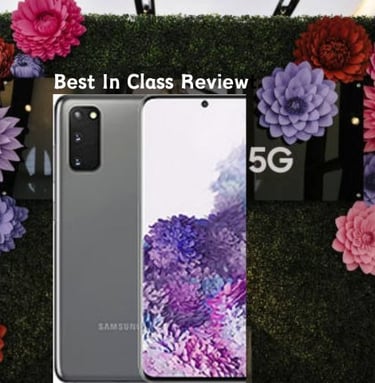

Comparative Analysis of the Samsung Galaxy S20 (2020)
The Samsung Galaxy S20 (2020) is a flagship smartphone that launched with a host of innovative features and high-end specifications, aiming to solidify Samsung’s dominance in the premium mobile space. As with most flagship devices, the S20 faces stiff competition from other high-end models, including Apple’s iPhone 11, Google’s Pixel 4, and OnePlus 8 Pro. This comparative analysis will explore the key differences between the Galaxy S20 and its primary competitors, highlight their strengths and weaknesses, and provide a detailed feature comparison table for a clearer understanding.
Key Competitors of Samsung Galaxy S20 (2020)
Apple iPhone 11
Launched in September 2019, the iPhone 11 was Apple’s flagship model and positioned as a direct competitor to Samsung's Galaxy S20, with a focus on camera performance and iOS ecosystem integration.Google Pixel 4
Google's Pixel 4 (released October 2019) brought computational photography to the forefront, with a dual-camera system and the focus on AI-driven photography. It competed heavily with the Galaxy S20's camera prowess.OnePlus 8 Pro
Launched in April 2020, the OnePlus 8 Pro offers flagship performance at a slightly lower price point than the Galaxy S20, with features like a 120Hz AMOLED display, 5G support, and a competitive camera system.
Strengths and Weaknesses of Competitors
Apple iPhone 11
Strengths:
Camera Performance: While it doesn’t have the highest megapixel count, Apple’s computational photography, especially in low light, is exceptional, particularly with its Night Mode.
iOS Ecosystem: Tight integration with Apple’s ecosystem (MacBooks, iPads, AirPods, etc.) provides seamless performance, privacy features, and frequent software updates.
Build Quality: Apple’s fit and finish are among the best, with premium materials and attention to detail in the design.
Battery Life: Despite a smaller battery, the iPhone 11 has solid real-world battery life due to software optimizations.
Weaknesses:
Display: The iPhone 11’s LCD display (Liquid Retina HD) lacks the color vibrancy and resolution found in OLED displays like the Galaxy S20.
No 5G: The iPhone 11 doesn’t support 5G, making it less future-proof compared to the Galaxy S20 and OnePlus 8 Pro.
Limited RAM: With only 4GB of RAM, the iPhone 11 can’t match the multitasking capabilities of Android competitors with higher RAM.
Google Pixel 4
Strengths:
Camera Software: Google’s computational photography and AI-powered features are industry-leading, especially in terms of night photography, dynamic range, and color accuracy.
Software Experience: As the "purest" Android experience, the Pixel 4 receives faster updates and stock Android, with features like Call Screen, Google Assistant, and the Soli radar for gesture controls.
Optimized Performance: Google's optimization of hardware and software ensures smooth operation, despite having fewer resources than other flagships.
Weaknesses:
Battery Life: The 2,800mAh battery is relatively small compared to competitors, and combined with a higher power consumption due to the 90Hz display and background processes, battery life can be underwhelming.
Design: The design of the Pixel 4 feels somewhat dated compared to the Galaxy S20 or OnePlus 8 Pro, with a thicker bezel and a more utilitarian look.
Storage: Lack of expandable storage and relatively limited base storage options (64GB) puts some users at a disadvantage.
OnePlus 8 Pro
Strengths:
Value for Money: The OnePlus 8 Pro provides a flagship experience at a slightly lower price point than Samsung and Apple, with premium build quality and top-tier specs.
Display: The 6.78-inch Fluid AMOLED display at 120Hz provides a great viewing experience, on par with the Galaxy S20’s display.
Fast Charging: OnePlus’s Warp Charge 30T is one of the fastest charging technologies in the industry, allowing the phone to reach a full charge in around an hour.
Performance: Powered by the Snapdragon 865, the OnePlus 8 Pro delivers smooth performance, on par with any other flagship.
Weaknesses:
Camera System: While the camera system is solid, it doesn’t quite match the performance of the Galaxy S20’s or Pixel 4’s in terms of image quality, especially in low-light conditions.
Software: OxygenOS is a fantastic Android skin, but it doesn’t have the same level of software longevity and polish as Samsung's One UI or Apple's iOS.
No IP68 Rating on Base Model: While the OnePlus 8 Pro does have an IP68 rating, the base OnePlus 8 does not, which may be a dealbreaker for some users.
In summary, the Samsung Galaxy S20 (2020) offers a powerful and feature-rich flagship experience, with standout features like its 120Hz display, 5G support, and advanced camera capabilities. However, it faces tough competition from Apple’s iPhone 11, Google Pixel 4, and the OnePlus 8 Pro.
iPhone 11 is a great choice for those embedded in Apple’s ecosystem, offering superior software optimization, camera performance, and battery life, but it lacks 5G support and has an inferior display.
The Google Pixel 4 shines in camera performance with its computational photography but suffers from smaller battery capacity and fewer hardware features compared to the Galaxy S20.
OnePlus 8 Pro provides a compelling value proposition with top-tier performance and display at a slightly lower price point, but it falls short in camera quality and software longevity.
Ultimately, the Galaxy S20 remains an excellent choice for those seeking a well-rounded flagship with future-proof technology, especially for display quality and 5G support. However, depending on budget, operating system preference, and specific features (camera, battery, ecosystem), the competition offers strong alternatives that may suit different needs.
Comparative Analysis
How the S20 Flagship Holds Up Against 2024 Smartphones in Terms of Features and Speed
Features Comparison Table
How Does the 2020 Samsung Smartphone Compare in 2024?
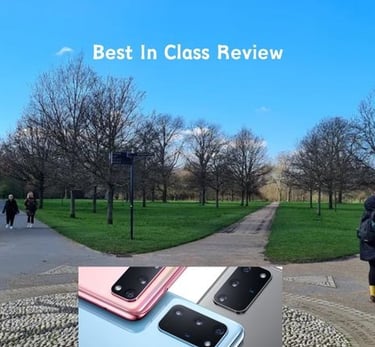

User Experience of the Samsung Galaxy S20 (2020)
A Premium Yet Smooth Experience
The user experience of the Samsung Galaxy S20 (2020) stands out as one of its most refined aspects, combining cutting-edge technology with thoughtful design elements that enhance day-to-day usage. The 6.2-inch Dynamic AMOLED 2X display is undoubtedly the centerpiece, offering vivid colors, deep blacks, and exceptional clarity, whether you’re watching videos, browsing content, or gaming. The 120Hz refresh rate takes the user experience to the next level, ensuring smooth interactions throughout the interface, from scrolling through social media feeds to gaming and app switching. This buttery-smooth navigation is complemented by One UI, Samsung’s custom Android skin, which delivers a clean, intuitive, and user-friendly interface. One UI focuses on enhancing one-handed use, offering large icons and easy-to-reach controls that make navigating the phone a breeze, even with a larger screen. The device’s performance is equally impressive, powered by the Exynos 990 (or Snapdragon 865 in some regions), paired with 8GB of RAM, which ensures seamless multitasking, swift app launches, and lag-free gaming experiences. Samsung has also integrated smart features such as Bixby Routines for automating tasks and Samsung DeX for a desktop-like experience when connected to a monitor, which is perfect for users who want to maximize their phone’s productivity potential. The in-display fingerprint sensor offers fast and reliable biometric security, though some users may find it slightly slower than traditional capacitive sensors. Battery life, with its 4,000mAh capacity, typically lasts a full day of moderate use, and when paired with 25W fast charging, wireless charging, and Wireless PowerShare, the S20 proves itself to be versatile and future-ready. However, the absence of a microSD card slot and the relatively small battery compared to some competitors might be drawbacks for users who prioritize expandable storage or longer-lasting power. Overall, the Samsung Galaxy S20 delivers a polished, premium, and fluid user experience that seamlessly blends design, performance, and innovative features to cater to a broad range of user needs, making it a compelling choice for those who seek a top-tier Android smartphone.
User Experience
Should You Buy in 2024? Performance, Design, and Battery Life
Price Range
Is It Still a Flagship Worth Your Money in 2024?
The Samsung Galaxy S20 (2020) launched with a premium price tag, reflecting its status as a flagship device. At its release, the Galaxy S20 started at approximately $999 USD for the base model with 8GB of RAM and 128GB of internal storage, positioning it firmly in the high-end smartphone market. The pricing varied slightly depending on the region, with some markets offering a slightly lower price, while others, especially those including 5G connectivity options, saw an increase. As the year progressed and newer models like the Galaxy S21 were introduced, the price of the S20 began to drop. By late 2020 and into 2021, the S20 was often available at discounted prices through promotions, trade-in offers, or retail sales, making it a more accessible option for those seeking a high-performance device without the latest flagship cost. Prices could also fluctuate based on storage options, with higher storage variants like the S20+ and S20 Ultra reaching upwards of $1,200 to $1,400 USD, depending on the configuration. Additionally, deals on unlocked and carrier-locked models also affected the pricing structure. Today, the Samsung Galaxy S20 can be found at lower price points from third-party retailers, typically ranging from $400 to $600 USD for refurbished or pre-owned models, making it a more affordable option for users who are still looking for top-tier performance at a more budget-friendly price. Despite its launch price, the S20 continues to offer excellent value due to its high-end specs, camera capabilities, and future-proof 5G support.


Evolution from Previous Models
The Samsung Galaxy S20 (2020) marks a significant evolution from its predecessors, building on the strengths of the Galaxy S10 and S9 while introducing a host of exciting upgrades. One of the most noticeable changes is the display – the S20 features a 120Hz refresh rate, which is a substantial leap from the 60Hz on the S10 and S9. This makes the Galaxy S20's screen feel incredibly smooth and responsive, especially when scrolling, gaming, or navigating through apps. The camera system also saw major improvements: while the S10 boasted impressive triple cameras, the S20 pushed the envelope with a more refined setup, including a 64MP telephoto lens, offering much higher zoom capabilities and sharper details. Plus, the addition of 8K video recording was a standout feature that set the S20 apart from the S10, allowing users to capture ultra-high-definition video content. On the performance front, the S20 upgraded to a more powerful Exynos 990 or Snapdragon 865 chipset (depending on the region), offering better speed, efficiency, and 5G compatibility, which was a major leap from the S10’s Exynos 9820/Snapdragon 855. The battery life also got a boost, with a larger 4,000mAh battery in the S20 compared to the 3,400mAh in the S10, ensuring more power for all-day use, even with the high-refresh-rate screen. All in all, the Galaxy S20 was a major step forward, offering enhanced performance, an even more stunning display, and cutting-edge camera technology, making it a powerful successor to the S10 and a device that set the stage for Samsung's future flagships.
Key Decision-Making Factors
How the 120Hz Display, 5G Connectivity, and Camera Technology Evolve the Flagship Experience
When deciding whether the Samsung Galaxy S20 (2020) is the right phone for you, there are a few key factors to consider. First, think about the display – if you enjoy smooth, fluid motion when scrolling or gaming, the 120Hz refresh rate on the S20 is a standout feature that delivers a much more responsive experience compared to older models. Another important factor is the camera system; the S20’s impressive 64MP telephoto lens and 8K video recording offer a significant upgrade if you're into photography or creating high-quality videos. If 5G connectivity is important to you, the S20 is 5G-ready, which means it’s future-proof for faster data speeds as 5G networks continue to expand. The performance of the S20 is another consideration – powered by the Exynos 990 or Snapdragon 865 chipset, it ensures smooth multitasking and top-tier gaming performance, so if you’re looking for a phone that can handle anything you throw at it, this is a solid choice. Lastly, the battery life has been improved with a 4,000mAh battery, so you should expect a full day of use even with the high-refresh-rate display enabled. Overall, if you value cutting-edge technology, a sleek design, and powerful performance, the Samsung Galaxy S20 offers an appealing mix of features that can meet the needs of a wide range of users.
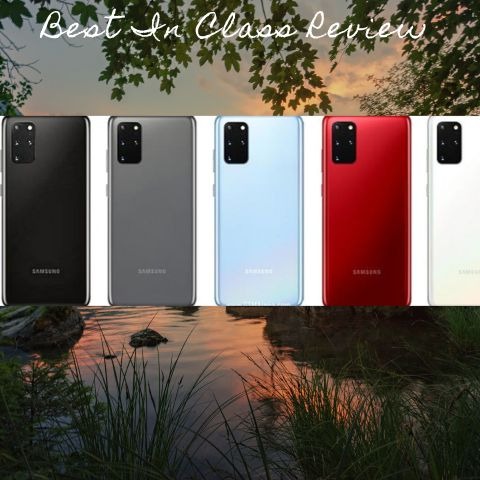

Conclusion
In conclusion, the Samsung Galaxy S20 (2020) is a flagship that masterfully combines cutting-edge features, advanced performance, and premium design, making it a formidable contender in the highly competitive smartphone market. With its 120Hz refresh rate display, the S20 delivers an ultra-smooth, immersive experience that enhances everything from daily navigation to high-end gaming. The 64MP telephoto camera, coupled with 8K video recording capabilities, elevates the S20’s imaging potential, catering to users who demand professional-grade photography and video quality on the go. Powered by the Exynos 990 (or Snapdragon 865, depending on the region), the S20 ensures robust performance, excelling at multitasking, demanding applications, and resource-heavy games with ease. The inclusion of 5G connectivity future-proofs the device, positioning it for next-generation data speeds, an increasingly important factor as mobile networks evolve globally. Compared to its predecessors, such as the Galaxy S10, the S20 represents a significant leap forward, especially in display technology, camera innovation, and battery performance. The 4,000mAh battery provides reasonable endurance, though power users may find themselves needing a midday charge when the high-refresh-rate display is in play.
In terms of market positioning, the S20 continues Samsung's tradition of offering premium smartphones, priced at a premium at launch but becoming more accessible as newer models like the S21 and S22 are released. While its pricing may have been a bit high initially, the S20 now offers considerable value for those seeking flagship-level specs at a slightly reduced price, especially on the second-hand or refurbished market. However, it’s important to weigh these factors against competitors such as the iPhone 11 and Google Pixel 4, both of which provide excellent cameras and performance but lack the same visual dynamism and high-refresh-rate display that the Galaxy S20 offers. Moreover, Samsung’s One UI software, while feature-rich and highly customizable, may feel bloated for users who prefer a more streamlined experience. Despite this, the user experience remains highly polished, with intuitive navigation, smooth performance, and thoughtful features like Wireless PowerShare and Samsung DeX.
In terms of technological advancements, the Galaxy S20 pushes the envelope with features like 8K video recording, HDR10+ support on the display, and 5G compatibility, solidifying its place as one of the most forward-thinking smartphones of its generation. When looking at its evolution from previous models like the S10, the S20 brings notable improvements in display quality, camera versatility, and performance, offering a better balance of power and efficiency. The key decision-making factors for potential buyers include the desire for a future-proof device with top-tier photography, seamless performance, and the flexibility of a smooth 120Hz display, all while considering the battery performance and price fluctuations as newer models enter the market.
In summary, the Samsung Galaxy S20 (2020) excels in offering a well-rounded, high-performance device with standout features, making it a top choice for users seeking premium hardware, advanced features, and a future-proofed experience. Despite some minor trade-offs in battery life and the software complexity of One UI, the S20 remains an excellent option for those looking for a flagship device that combines innovation with reliable performance, making it a compelling investment in the evolving smartphone landscape.
In-depth analysis of products across categories.
Contact us info@bestinclassreview.com
© 2024. All rights reserved.
Subscribe for Latest Tech
Article News & Reviews
📬 Stay Ahead with the Latest Tech Article News & Reviews!
If you found this review helpful and want to stay informed about the latest features, security updates, tech article news, and smart insights, don’t miss out on what’s coming next.
👉 Subscribe now to get fresh reviews, breaking tech news, in-depth tech articles, and expert analysis delivered straight to your inbox.
Be the first to know—because staying informed means staying secure.
🔔 Subscribe Here
Your smarter tech journey starts today!
